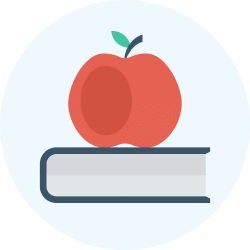Class 2 Exam > Class 2 Notes > Science Class 2 ICSE > Chapter Notes: Bones and Muscles
Bones and Muscles Chapter Notes | Science Class 2 ICSE PDF Download
| Table of contents |

|
| Introduction |

|
| Bones |

|
| Muscles |

|
| Types of Muscles |

|
| Regular Exercise |

|
| Good Posture |

|
| Internal Organs |

|
Introduction
The chapter "Bones and Muscles" explains how our body gets its shape and moves. Bones and muscles work together to help us stand, walk, run, and do many activities. This chapter also talks about the importance of joints, types of muscles, the need for exercise, good posture, and the role of internal organs in keeping our body healthy and active.
Bones
- Our body has 206 bones that form a framework called the skeleton.
- The skeleton is under the skin and gives shape and support to the body.
- It protects important organs like the brain, heart, lungs, and liver.
- The place where two bones meet is called a joint.
- Joints help us bend, twist, or kick.
- Elbows and knees are examples of joints.
- The thigh bone is the longest bone in the body.
- The smallest bone is in the ear.
- Parts of the body without bones include nails, hair, and teeth.
- Without an elbow joint, we cannot bend our arm.
Muscles
- Muscles are soft parts under the skin.
- There are about 600 muscles in our body.
- Muscles cover bones and help them move.
- Bones and muscles work together for walking, running, and bending.
- Strong muscles help us play and work well.
- Using muscles makes them stronger.
- Not using muscles can make us fat and unfit.
Types of Muscles
- Eye muscles move the eyeball to help us see in all directions.
- Heart muscles help the heart beat and work all the time we are alive.
- Stomach muscles push food for digestion (breaking food into smaller parts).
Regular Exercise
- Healthy food and regular exercise make muscles strong.
- Foods like milk, eggs, and sprouts help build healthy muscles.
- Exercises include running, skipping, brisk walking, swimming, cycling, and skating.
Good Posture
- Posture is how we hold our body while sitting, standing, or walking.
- Correct posture keeps muscles and bones healthy.
- We should not droop shoulders or bend our back while sitting, standing, or walking.
- Good posture makes us healthy and look smart.
Internal Organs
- Internal organs are parts inside our body with special functions.
- The brain helps us think, remember, and control the whole body.
- The heart pumps blood to all parts of the body.
- The lungs help us breathe.
- The stomach helps in digestion of food.
The document Bones and Muscles Chapter Notes | Science Class 2 ICSE is a part of the Class 2 Course Science Class 2 ICSE.
All you need of Class 2 at this link: Class 2
|
65 docs|15 tests
|
FAQs on Bones and Muscles Chapter Notes - Science Class 2 ICSE
| 1. What are the main functions of bones in the human body? |  |
Ans. Bones serve several important functions in the human body. They provide structure and support, protect vital organs, enable movement by serving as levers for muscles, store minerals such as calcium and phosphorus, and produce blood cells in the bone marrow.
| 2. How many types of muscles are there, and what are they? |  |
Ans. There are three main types of muscles in the human body: skeletal muscles, which are attached to bones and help with voluntary movements; smooth muscles, which are found in internal organs and control involuntary movements; and cardiac muscles, which make up the heart and are responsible for pumping blood.
| 3. Why is regular exercise important for muscles and bones? |  |
Ans. Regular exercise is crucial for maintaining healthy muscles and bones. It helps to strengthen muscles, improve flexibility, and enhance bone density, reducing the risk of osteoporosis. Exercise also promotes overall health and well-being by improving cardiovascular fitness and mental health.
| 4. What is good posture, and why is it important? |  |
Ans. Good posture refers to the proper alignment of the body while sitting, standing, or moving. It is important because it helps prevent strain on muscles and ligaments, reduces the risk of injury, and promotes efficient movement. Maintaining good posture can also improve breathing and digestion.
| 5. What are some internal organs protected by the bones? |  |
Ans. Bones protect several vital internal organs in the body. For example, the skull protects the brain, the rib cage safeguards the heart and lungs, and the vertebral column encases the spinal cord. These protective structures help to prevent injury to these essential organs.
Related Searches















